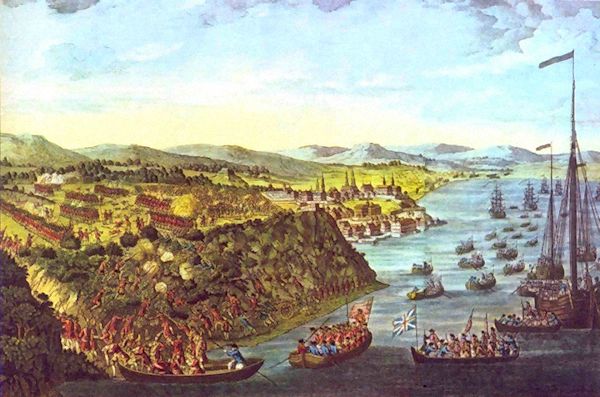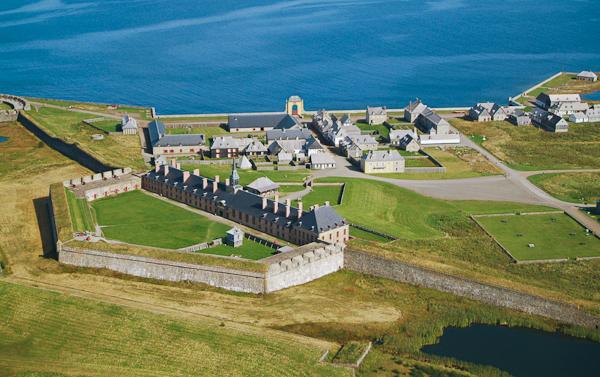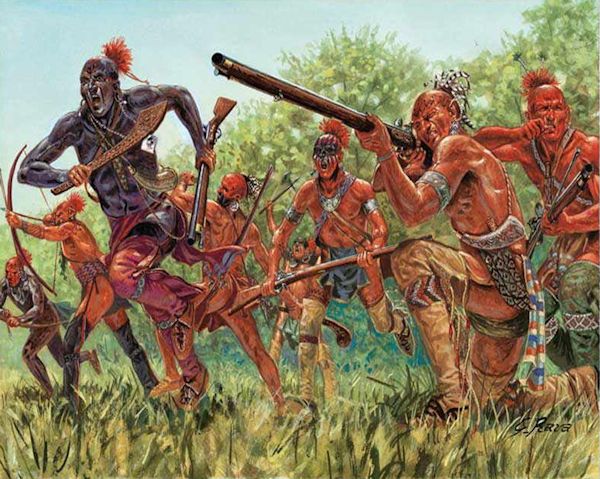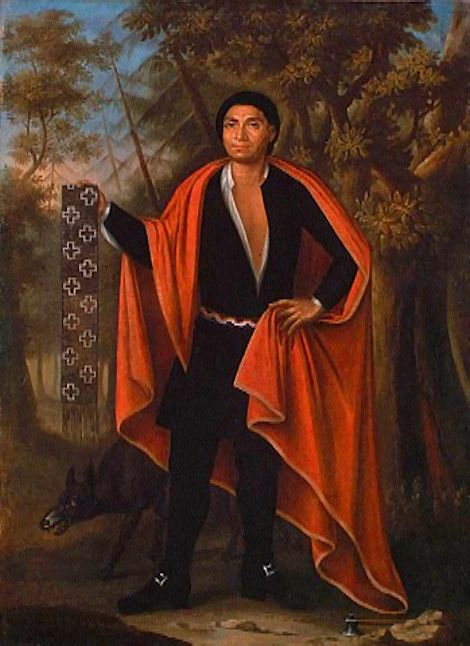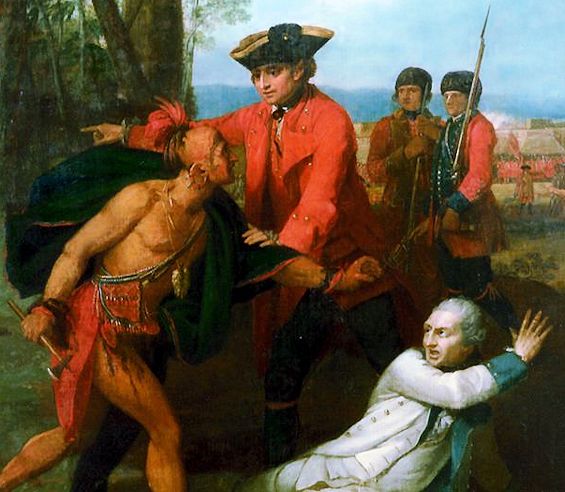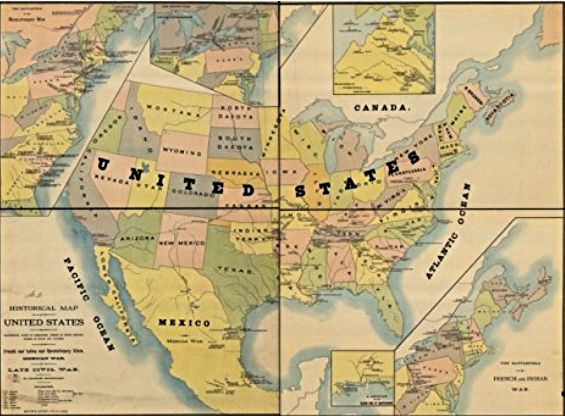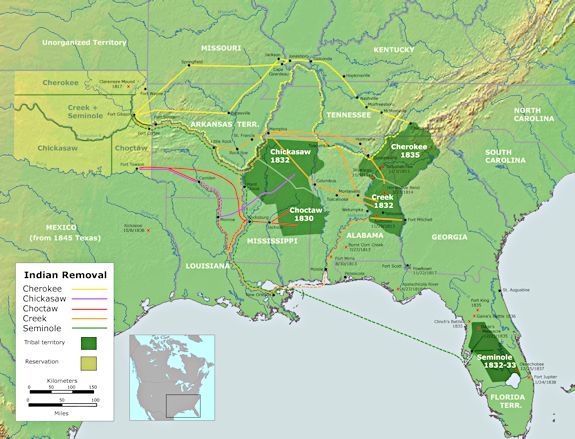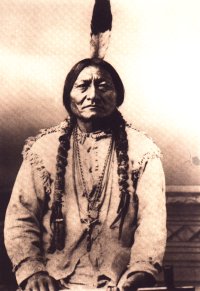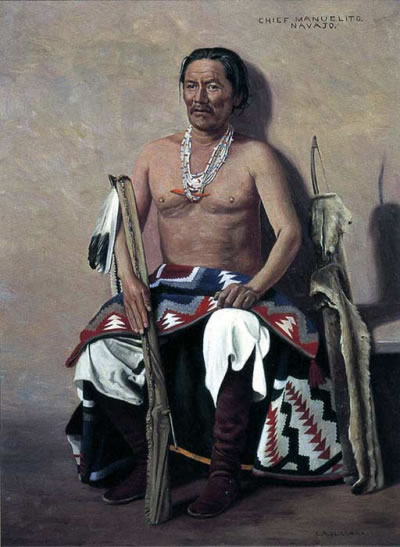Following the successful capture of Louisbourg in 1758, British leaders began planning for a strike against Quebec the next year.The Battle of Quebec was fought September 13, 1759, during the French & Indian War (1754-1763).
Native American History
Indian Wars West of the Mississippi
Arikara War (1823)
Osage Indian War (1837)
Texas–Indian wars (1836–1877)
Comanche Wars (1836–1877)
Antelope Hills expedition (1858)
Comanche Campaign (1867–1875)
Red River War (1874–1875)
Buffalo Hunters’ War (1876–1877)
Cayuse War (1847–1855)
Apache Wars (1849–1924)
Jicarilla War (1849–1855)
Chiricahua Wars (1860–1886)
Tonto War (1871–1875)
Renegade period (1879–1924)
Victorio’s War (1879–1880)
Geronimo’s War (1881–1886)
Yuma War (1850–1853)
Ute Wars (1850–1923)
Battle at Fort Utah (1850)
Walker War (1853–1854)
Tintic War (1856)
Black Hawk War (1865–1872)
White River War (1879)
Ute War (1887)
Bluff War (1914–1915)
Bluff Skirmish (1921)
Posey War (1923)
Sioux Wars (1854–1891)
First Sioux War (1854-1856)
Dakota War (1862)
Colorado War (1863–1865)
Powder River War (1865)
Red Cloud’s War (1866–1868)
Great Sioux War (1876–1877)
Northern Cheyenne Exodus (1878-1879)
Ghost Dance War (1890–1891)
Rogue River Wars (1855–1856)
Yakima War (1855–1858)
Puget Sound War (1855–1856)
Coeur d’Alene War (1858)
Mohave War (1858–1859)
Navajo Wars (1849–1866)
Paiute War (1860)
Yavapai Wars (1861–1875)
Snake War (1864–1869)
Hualapai War (1865–1870)
Modoc War (1872–1873)
Nez Perce War (1877)
Bannock War (1878)
Crow War (1887)
Bannock Uprising (1895)
Yaqui Uprising (1896)
Battle of Sugar Point (1898)
Crazy Snake Rebellion (1909)
Last Massacre (1911)
Battle of Kelley Creek (1911)
Battle of Bear Valley (1918
Native American cultures in the United States include a wide array of socially and geographically diverse groups, whose nomadic ancestors are believed to have traveled via a long-gone land bridge across the Bering Strait at least 13,000 years ago. It is still debated whether there were one or three migrations across the Bering Strait.Three major migrations occurred, as traced by linguistic and genetic data.
The early Paleoamericans soon spread throughout the Americas, diversifying into many hundreds of culturally distinct nations and tribes. By 8000 BCE the North American climate was very similar to today’s. A study published in 2012 gives genetic backing to the 1986 theory put forward by linguist Joseph Greenberg that the Americas must have been populated in three waves, based on language differences.
Some archaeologists divide the archaeological record in the Americas into five phases:
Lithic stage
Defined by the ostensible prevalence of big-game hunting. In most places, this can be dated to before 8000 BCE, starting most probably around 16,500 BCE (see Paleo-Indians). Examples include the Clovis culture and Folsom tradition groups.
The Archaic stage
Defined by the increasingly intensive gathering of wild resources with the decline of the big-game hunting lifestyle. Typically, Archaic cultures can be dated from 8000 to 1000 BCE. Examples include the Archaic Southwest, the Arctic small tool tradition, the Poverty Point culture, and the Chan-Chan culture in southern Chile.
The Formative stage
Defined as “village agriculture” based. Most of these can be dated from 1000 BCE to 500 CE. Examples include the Dorset culture, Zapotec civilization, Mimbres culture, Olmec, Woodland, and Mississippian cultures.
The Classic stage
Defined as “early civilizations”, and typically dating from 500 to 1200 CE. Willey and Phillips considered only cultures from Mesoamerica and Peru to have achieved this level of complexity. Examples include the early Maya and the Toltec.
The Post-Classic stage
Defined as “later prehispanic civilizations” and typically dated from 1200 CE until the advent of European colonisation. The late Maya and the Aztec cultures were Post-Classic.
Numerous Paleoindian cultures occupied North America, with some arrayed around the Great Plains and Great Lakes of the modern United States of America and Canada, as well as adjacent areas to the West and Southwest. According to the oral histories of many of the indigenous peoples of the Americas, they have been living on this continent since their genesis, described by a wide range of traditional creation stories.
Other tribes have stories that recount migrations across long tracts of land and a great river, believed to be the Mississippi River. Genetic and linguistic data connect the indigenous people of this continent with ancient northeast Asians. Archeological and linguistic data has enabled scholars to discover some of the migrations within the Americas.
However they arrived, the Native Americans of North America dispersed over many thousands of years and became hundreds of distinct cultural groups, speaking many different languages.
The Clovis Culture
The Clovis culture, a megafauna hunting culture, is primarily identified by use of fluted spear points. Artifacts from this culture were first excavated in 1932 near Clovis, New Mexico. The Clovis culture ranged over much of North America and also appeared in South America. The culture is identified by the distinctive Clovis point, a flaked flint spear-point with a notched flute, by which it was inserted into a shaft. Dating of Clovis materials has been by association with animal bones and by the use of carbon dating methods. Recent reexaminations of Clovis materials using improved carbon-dating methods produced results of 11,050 and 10,800 radiocarbon years BP (roughly 9100 to 8850 BCE).
The Folsom Culture
The Folsom Tradition was characterized by use of Folsom points as projectile tips, and activities known from kill sites, where slaughter and butchering of bison took place. Folsom tools were left behind between 9000 BCE and 8000 BCE.
Na-Dene’ and Athabaskan Peoples
Na-Dené-speaking peoples entered North America starting around 8000 BCE, reaching the Pacific Northwest by 5000 BCE, and from there migrating along the Pacific Coast and into the interior.
Linguists, anthropologists and archeologists believe their ancestors comprised a separate migration into North America, later than the first Paleo-Indians. They migrated into Alaska and northern Canada, south along the Pacific Coast, into the interior of Canada, and south to the Great Plains and the American Southwest.
They were the earliest ancestors of the Athabascan- speaking peoples, including the present-day and historical Navajo and Apache. They constructed large multi-family dwellings in their villages, which were used seasonally. People did not live there year-round. They left for the summer to hunt and fish, and to gather food supplies for the winter.
The Oshara Tradition
The Oshara Tradition people lived from 5500 BCE to 600 CE. They were part of the Southwestern Archaic Tradition centered in north-central New Mexico, the San Juan Basin, the Rio Grande Valley, southern Colorado, and southeastern Utah.
Middle Archaic Culture
Since the 1990s, archeologists have explored and dated eleven Middle Archaic sites in present-day Louisiana and Florida at which early cultures built complexes with multiple earthwork mounds. They were societies of hunter-gatherers rather than the settled agriculturalists believed necessary according to the theory of Neolithic Revolution to sustain such large villages over long periods.
The prime example is Watson Brake in northern Louisiana, whose 11-mound complex is dated to 3500 BCE, making it the oldest, dated site in the Americas for such complex construction. It is nearly 2,000 years older than the Poverty Point site. Construction of the mounds went on for 500 years until they were abandoned about 2800 BCE, probably due to changing environmental conditions.
Late Archaic Culture
Poverty Point culture is a Late Archaic archaeological culture that inhabited the area of the lower Mississippi Valley and surrounding Gulf Coast. The culture thrived from 2200 BCE to 700 BCE. Evidence of this culture has been found at more than 100 sites, from the major complex at Poverty Point, Louisiana (a UNESCO World Heritage Site) across a 100-mile (160 km) range to the Jaketown Site near Belzoni, Mississippi.
Poverty Point is a 1 square mile (2.6 km2) complex of six major earthwork concentric rings, with additional platform mounds at the site. Artifacts show the people traded with other Native Americans located from Georgia to the Great Lakes region. This is one among numerous mound sites of complex indigenous cultures throughout the Mississippi and Ohio valleys. They were one of several succeeding cultures often referred to as mound builders.
The Woodland Period
The Woodland period of North American pre-Columbian cultures refers to the time period from roughly 1000 BCE to 1,000 CE in the eastern part of North America. The term “Woodland” was coined in the 1930s and refers to prehistoric sites dated between the Archaic period and the Mississippian cultures.
The Hopewell Tradition
The Hopewell tradition is the term for the common aspects of the Native American culture that flourished along rivers in the northeastern and midwestern United States from 200 BCE to 500 CE.
The Hopewell tradition was not a single culture or society, but a widely dispersed set of related populations, who were connected by a common network of trade routes, known as the Hopewell Exchange System. At its greatest extent, the Hopewell exchange system ran from the Southeastern United States into the southeastern Canadian shores of Lake Ontario. Within this area, societies participated in a high degree of exchange; most activity was conducted along the waterways that served as their major transportation routes. The Hopewell exchange system traded materials from all over the United States.
Pacific Coast Culture
The indigenous peoples of the Pacific Northwest Coast were of many nations and tribal affiliations, each with distinctive cultural and political identities, but they shared certain beliefs, traditions and practices, such as the centrality of salmon as a resource and spiritual symbol. Their gift-giving feast, potlatch, is a highly complex event where people gather in order to commemorate a special events. These events, such as, the raising of a Totem pole or the appointment or election of a new chief. The most famous artistic feature of the culture is the Totem pole, with carvings of animals and other characters to commemorate cultural beliefs, legends, and notable events.
Adena Culture
The Adena culture was a Native American culture that existed from 1000 BCE to 200 BCE, in a time known as the Early Woodland period. The Adena culture refers to what were probably a number of related Native American societies sharing a burial complex and ceremonial system.
Coles Creek culture
The Coles Creek culture is an indigenous development of the Lower Mississippi Valley that took place between the terminal Woodland period and the later Plaquemine culture period. The period is marked by the increased use of flat-topped platform mounds arranged around central plazas, more complex political institutions, and a subsistence strategy still grounded in the Eastern Agricultural Complex and hunting rather than on the maize plant as would happen in the succeeding Plaquemine Mississippian period.
The culture was originally defined by the unique decoration on grog-tempered ceramic ware by James A. Ford after his investigations at the Mazique Archeological Site. He had studied both the Mazique and Coles Creek Sites, and almost went with the Mazique culture, but decided on the less historically involved sites name. It is ancestral to the Plaquemine culture.
Hohokam culture
The Hohokam was a culture centered along American Southwest. The early Hohokam founded a series of small villages along the middle Gila River. They raised corn, squash and beans. The communities were located near good arable land, with dry farming common in the earlier years of this period. They were known for their pottery, using the paddle-and-anvil technique.
The Classical period of the culture saw the rise in architecture and ceramics. Buildings were grouped into walled compounds, as well as earthen platform mounds. Platform mounds were built along rivers as well as irrigation canal systems, suggesting these sites were administrative centers allocating water and coordinating canal labor.
Polychrome pottery appeared, and burial replaced cremation. Trade included that of shells and other exotics. Social and climatic factors led to a decline and abandonment of the area after 1400 CE.
Ancestral Puebloan culture
The Ancestral Puebloan culture covered present-day Four Corners region of the United States, comprising southern Utah, northern Arizona, northwestern New Mexico, and southwestern Colorado. It is believed that the Ancestral Puebloans developed, at least in part, from the Oshara Tradition, who developed from the Picosa culture.
They lived in a range of structures that included small family pit houses, larger clan type structures, grand pueblos, and cliff sited dwellings.
The Ancestral Puebloans possessed a complex network that stretched across the Colorado Plateau linking hundreds of communities and population centers. The culture is perhaps best known for the stone and earth dwellings built along cliff walls, particularly during the Pueblo II and Pueblo III eras.
Mississippian culture
The Mississippian culture which extended throughout the Ohio and Mississippi valleys and built sites throughout the Southeast, created the largest earthworks in North America north of Mexico, most notably at Cahokia, on a tributary of the Mississippi River in present-day Illinois.
The ten-story Monks Mound at Cahokia has a larger circumference than the Pyramid of the Sun at Teotihuacan or the Great Pyramid of Egypt. The 6 square miles (16 km2) city complex was based on the culture’s cosmology; it included more than 100 mounds, positioned to support their sophisticated knowledge of astronomy, and built with knowledge of varying soil types. The society began building at this site about 950 CE, and reached its peak population in 1,250 CE of 20,000–30,000 people, which was not equalled by any city in the present-day United States until after 1800.
Cahokia was a major regional chiefdom, with trade and tributary chiefdoms located in a range of areas from bordering the Great Lakes to the Gulf of Mexico.
Kincaid c. 1050–1400 CE, is one of the largest settlements of the Mississippian culture, it was located at the southern tip of present-day U.S. state of Illinois. Kincaid Mounds has been notable for both its significant role in native North American prehistory and for the central role the site has played in the development of modern archaeological techniques.
The site had at least 11 substructure platform mounds (ranking fifth for mound-culture pyramids). Artifacts from the settlement link its major habitation and the construction of the mounds to the Mississippian period, but it was also occupied earlier during the Woodland period.
The Mississippian culture developed the Southeastern Ceremonial Complex, the name which archeologists have given to the regional stylistic similarity of artifacts, iconography, ceremonies and mythology.
The rise of the complex culture was based on the people’s adoption of maize agriculture, development of greater population densities, and chiefdom-level complex social organization from 1200 CE to 1650 CE.
The Mississippian pottery are some of the finest and most widely spread ceramics north of Mexico. Cahokian pottery was espically fine, with smooth surfaces, very thin walls and distinctive tempering, slips and coloring.
Iroquois Culture
The Iroquois League of Nations or “People of the Long House”, based in present-day upstate and western New York, had a confederacy model from the mid-15th century. It has been suggested that their culture contributed to political thinking during the development of the later United States government. Their system of affiliation was a kind of federation, different from the strong, centralized European monarchies.
Leadership was restricted to a group of 50 sachem chiefs, each representing one clan within a tribe; the Oneida and Mohawk people had nine seats each; the Onondagas held fourteen; the Cayuga had ten seats; and the Seneca had eight.
Representation was not based on population numbers, as the Seneca tribe greatly outnumbered the others. When a sachem chief died, his successor was chosen by the senior woman of his tribe in consultation with other female members of the clan; property and hereditary leadership were passed matrilineally.
Decisions were not made through voting but through consensus decision making, with each sachem chief holding theoretical veto power. The Onondaga were the “firekeepers”, responsible for raising topics to be discussed. They occupied one side of a three-sided fire (the Mohawk and Seneca sat on one side of the fire, the Oneida and Cayuga sat on the third side.)
Elizabeth Tooker, an anthropologist, has said that it was unlikely the US founding fathers were inspired by the confederacy, as it bears little resemblance to the system of governance adopted in the United States. For example, it is based on inherited rather than elected leadership, selected by female members of the tribes, consensus decision-making regardless of population size of the tribes, and a single group capable of bringing matters before the legislative body.
Long-distance trading did not prevent warfare and displacement among the indigenous peoples, and their oral histories tell of numerous migrations to the historic territories where Europeans encountered them. The Iroquois invaded and attacked tribes in the Ohio River area of present-day Kentucky and claimed the hunting grounds. Historians have placed these events as occurring as early as the 13th century, or in the 17th century Beaver Wars.
Through warfare, the Iroquois drove several tribes to migrate west to what became known as their historically traditional lands west of the Mississippi River. Tribes originating in the Ohio Valley who moved west included the Osage, Kaw, Ponca and Omaha people.
By the mid-17th century, they had resettled in their historical lands in present-day Kansas, Nebraska, Arkansas and Oklahoma. The Osage warred with Caddo-speaking Native Americans, displacing them in turn by the mid-18th century and dominating their new historical territories.
Native American Genealogy Native American History by State
What’s New:
King George’s War is the European name given to the operations that formed the 1744–1748 War of the Austrian Succession. It was the third of the four French and Indian Wars. Also known as the War of Jenkins’ Ear, it officially began when a Spanish commander chopped off the ear of English merchant captain Robert Jenkins and told him to take that to his king, George II.
The Siege of Louisbourg was the major battle in this war that took place on North American soil. Loisbourg was the capital of the French province of Île-Royale (present-day Cape Breton Island).
The French and Indian War (called the Seven Years’ War in Europe) was fought from 1754-1763. The French and Indian War was the last of four major colonial wars between the British, the French, and their Native American allies for control of North America.
It was the first North American global war, fought in North America, India, Prussia, Austria and other European countries, Russia, and West Africa. During the fighting that occurred on North American soil, both sides often had Indian allies. Sometimes factions of one tribe fought on both sides. Here is a brief explanation of who fought on what side.
Battle of Lake George
32 ViewsThe Battle of Lake George took place September 8, 1755, during the French & Indian War (1754-1763) fought between the French and British. About 200 Mohawk warriors fought with Sir William Johnson and 1,500 men for the British against Jean Erdman, Baron Dieskau, 2,800 frenchmen, and 700 allied Indians, including Mohawks from Canada, for the French.
The Mohawks and British won this battle, but at a steep cost.
French and Indian War, 1758-1763
30 ViewsFor 1758, the British government, now headed by the Duke of Newcastle as prime minister and William Pitt as secretary of state, turned its attention to recovering from the previous years’ reverses in North America. To accomplish this, Pitt devised a three-prong strategy which called for British troops to move against Fort Duquesne in Pennsylvania, Fort Carillon on Lake Champlain, and the fortress of Louisbourg.
French and Indian War, 1754-1757
24 ViewsThe French and Indian War began in 1754 as British and French forces clashed in the wilderness of North America. Two years later, the conflict spread to Europe where it became known as the Seven Years’ War. In many ways an extension of the War of the Austrian Succession (1740-1748), the conflict saw a shifting of alliances with Britain joining with Prussia while France allied with Austria. The first war fought on a global scale, it saw battles in Europe, North America, Africa, India, and the Pacific. Concluding in 1763, the French & Indian/Seven Years’ War cost France the bulk of its North American territory.
Trail of Tears
29 ViewsAt the beginning of the 1830s, nearly 125,000 Native Americans lived on millions of acres of land in Georgia, Tennessee, Alabama, North Carolina and Florida–land their ancestors had occupied and cultivated for generations. By the end of the decade, very few natives remained anywhere in the southeastern United States.
Working on behalf of white settlers who wanted to grow cotton on the Indians’ land, the federal government forced them to leave their homelands and walk hundreds or even thousands of miles to a specially designated “Indian territory” across the Mississippi River (where Oklahoma is today). This difficult and sometimes deadly journey is known as the Trail of Tears.
Red Cloud’s War
28 ViewsRed Cloud’s War, also referred to as the Bozeman War or the Powder River War, was an armed conflict between the Lakota, Northern Cheyenne, and Northern Arapaho on one side and the United States in Wyoming and Montana territories from 1866 to 1868. The war was fought over control of the western Powder River Country in present day north-central Wyoming. This grassland, rich in buffalo, was traditionally Crow Indian land, but the Lakota had recently taken control. The Crow tribe held the treaty right to the disputed area, according to the major agreement reached at Fort Laramie in 1851. All involved in “Red Cloud’s War” were parties in that treaty.
The Colorado War
22 ViewsThe Colorado War was an Indian War fought from 1863 to 1865 between the Cheyenne and Arapaho Nations and white settlers and militia in the Colorado Territory and adjacent regions.
The Kiowa and the Comanche played a minor role in actions that occurred in the southern part of the Territory along the Arkansas River, while the Sioux played a major role in actions that occurred along the South Platte River along the Great Platte River Road, the eastern portion of the Overland Trail.
The United States government and Colorado Territory authorities participated through the Colorado volunteers, a citizens militia while the United States Army played a minor role. The war was centered on the Colorado Eastern Plains.
Mohican History Timeline
22 ViewsThis Mohican timeline briefly explains what happened to the people of their tribe.
History of the Kickapoo Wars
39 ViewsBefore they met their first European, the Kickapoo felt the changes he had brought. It started during the 1640s when the Beaver Wars moved into the Great Lakes. Seeking new hunting territory for fur to trade to the French, Tionontati, Ottawa and Neutrals warriors attacked the Kickapoo and their neighbors.
Kickapoo Indians Timeline
22 ViewsWritten history of the Kickapoo tribes begins in the 1600s. Here is a timeline of important events that affected the Kickapoo Tribe.
Cayuga Timeline
23 ViewsThe Cayuga are one of the tribes of the Iroquois Confederacy in New York state. Here is a timeline of important events in their history.
Huron History
30 ViewsBased on linguistic evidence, it appears that the Iroquian-speaking people Jacques Cartier encountered in 1535 on the St. Lawrence River at Hochelaga (Montreal) were the Huron.
Sometime after Cartier’s last visit in 1541, Hochelaga was abandoned probably due to wars with the Iroquois and Algonquins. Two groups of these so-called Laurentian Iroquois from the St. Lawrence, the Arendahronon and Tahonaenrat, moved west and by 1570 had combined with an older alliance of the Attignawantan and Attigneenongnahac to form the Huron Confederacy.
WintunTimeline
22 ViewsThe traditional location of the Wintun Tribe (aka Wetu) was in the Greater Sacramento Valley in California. Here is a timeline of important events that impacted their history.
The Winnebago Wars
22 ViewsThe Winnebago War was a brief conflict that took place in 1827 in the Upper Mississippi River region of the United States, primarily in what is now the state of Wisconsin. The Ho-Chunks were reacting to a wave of lead miners trespassing on their lands, and to false rumors that the United States had sent two Ho-Chunk prisoners to a rival tribe for execution.
Sandy Lake Tragedy
24 ViewsThe Sandy Lake Tragedy was the culmination of a series of events centered in Sandy Lake, Minnesota, that resulted in the deaths in 1850 of about 400 Lake Superior Chippewa when officials of the Zachary Taylor Administration and Minnesota Territory tried to relocate several bands of the tribe to areas west of the Mississippi River.
The Bascom Affair
22 ViewsThe Bascom Affair is considered to be the key event in triggering the 1860s Apache War. The Apache Wars were fought during the nineteenth century between the U.S. military and many tribes in what is now the southwestern United States. The triggering incident took place in 1861 in the area known as Arizona and New Mexico.
Timeline of US Indian Massacres
45 ViewsAn atrocity called an “Indian massacre” is a specific incident wherein a group of people (military, mob or other) deliberately kill a significant number of relatively defenseless or innocent people—usually civilian noncombatants or to the summary execution of prisoners-of-war. Here is a timeline of significant massacres that occurred in the United States between 1539 and 1911.
Maya Astronomy and Mathematics
22 ViewsMembers of the Mayan ethnics from Yucatan, Chiapas and Guatemala launched the website “Living the Mayan time, sun, corn and Calendar”, which aims to provide teachers and high school students with content in Maya Astronomy and Mathematics.
“It is an effort that brought the work of more than 130 people, of which 95 percent belong to the Maya indigenous from Yucatan, Chiapas and Guatemala, who worked to create a web page that highlights the ancestral knowledge of this civilization in areas such as astronomy and the calendar. This Mayan culture site will provide interactive tools in Maya Math lessons for children and high school teachers,” declared Isabel Hawkins.
Yakama Nation History Timeline
22 ViewsThe Yakama Nation is an indigenous tribe of the Pacific Northwest who live in Washington State. Here is a brief timeline of their history with Europeans from the 1750s to the present.
Lenape Tribe Timeline
23 ViewsThe Lenape tribal timeline began as far back as 10,000 years ago.
Chippewa Timeline
23 ViewsThe Chippewa peoples were in North America over 11,000 years before Columbus “discovered” the Americas. Here is a timeline of their history beginning in 1492.
Cherokee Quotes
22 ViewsHere are a few quotes from people of Cherokee ancestry. “Cherokee blood, if not destroyed, will win it’s course in beings of fair complexions, who will read that their ancestors became civilized under the frowns of misfortune, and the causes of their enemies.” — John Ridge creator of The Cherokee Phoenix and son of The […]
Sitting Bull Pictures
22 ViewsThis collection of old Indian pictures are of Chief Sitting Bull (Tatanka Iyotanka), an important historical leader of the Hunkpapa band of Lakota Sioux Indians. Sitting Bull pictures Sitting Bull ( Tatanka Iyotanka ) ( Tribe : Hunkpapa ( Lakota/Sioux)Sitting Bull Photo courtesy of South Dakota State Historical Society Tatanka IyotankaSitting Bull Tatanka Yotanka, Hunkpapa […]
Odawa Timeline
27 ViewsIn the beginning there was the Anishnabek. The Origin story. How we became the Odawa. The Odawa along with the Ojibwa and Potawatomi formed an alliance and became known as the Three Fires. Here is our Odawa timeline. 1600’s-1640’s The Iroquois Wars that drove the Odawa from Manitoulin Island and almost annihilated them. 1600’s-1800’s […]
The following speech was delivered in a public council at Genesse River, November 21, 1798, by Ho-na-ya-wus, commonly called Farmer’s brother; and, after being written as interpreted, it was signed by the principal chiefs present, and sent to the legislature of the state of New-York.
Dohasan II, the greatest chief in the history of the Kiowa tribe, in 1833 succeeded A‛dáte, who had been deposed for having allowed his people to be surprised and massacred by the Osage in that year. It was chiefly through his influence that peace was made between the Kiowa and Osage after the massacre referred to, […]
Pueblo Revolt of 1680
22 ViewsThe Pueblo Revolt of 1680, also known as Popé’s Rebellion, was an uprising of most of the Pueblo Indians against the Spanish colonizers in the province of Santa Fe de Nuevo México, present day New Mexico.The Pueblo people killed 400 Spanish and drove the remaining 2,000 settlers out of the province. Twelve years later the Spanish returned and were able to reoccupy New Mexico with little opposition.
Tiguex War
23 ViewsThe Tiguex War was the first named war between Europeans and Native Americans in what is now the United States. It was fought in the winter of 1540-41 by the expedition of Francisco Vázquez de Coronado against the twelve or thirteen pueblos of Tiwa Indians as well as other Puebloan tribes along both sides of the Rio Grande, north and south of present-day Bernalillo, New Mexico, in what was called the Tiguex Province.
Bloody Island Massacre
24 ViewsThe Bloody Island Massacre (also called the Clear Lake Massacre) occurred on an island called in the Pomo language, Bo-no-po-ti or Badon-napo-ti (Island Village), at the north end of Clear Lake, Lake County, California, on May 15, 1850. It was a place where the Pomo had traditionally gathered for the spring fish spawn. After this event, it became known as Bloody Island.
Choctaw History Timeline
23 ViewsHere is a timeline of important events in Choctaw history.
Comanche Timeline 1500 to Present
25 ViewsHere is a timeline of significant events in Comanche history from 1500 A.D. to the present.
Quotes from Kiowa Chief Santana
22 ViewsHere are some wisdom quotes from the great Kiowa war chief, Santana. Satanta was one of the most complicated men ever to rise from the Great Plains–a diplomat and orator who spoke eloquently in treaty negotiations, and was also a war chief who led his people at some of the bloodiest battles fought by the Kiowa warriors.
Quotes by Chief Seattle
22 ViewsHere are some quotes by the famous Duwamish Chief Seattle from the Pacific Northwest. The city of Seattle, Washington is named after him, but Seattle is a mispronounciation of his real name, which is Chief Sealth.
Quotes from Chief Joseph
22 ViewsHere are some quotes from the famous Nez Perce Chief Joseph. He is also known as Joseph the Younger, because he was named for his father, who is known as Joseph the Elder.
Quotes from Geronimo
22 ViewsHere are some famous quotes attributed to Geronimo, the great Apache war chief.
Crazy Horse Quotes
22 ViewsHere are some famous quotes attributed to Crazy Horse, the great Oglala Sioux war chief.
Quotes from Cochise, Apache
22 ViewsQuotes from Cochise, famous Apache warrior. Cochise, like Crazy Horse, was never photographed.
Quotes from Black Elk
22 ViewsQuotes attributed to Nicholas Black Elk [Hehaka Sapa] (c. December 1863 – 17 August or 19 August 1950) was a famous Wichasha Wakan (Medicine Man or Holy Man) and Heyoka of the Oglala Lakota (Sioux). He participated at about the age of twelve in the Battle of Little Big Horn of 1876, and was wounded in the massacre that occurred at Wounded Knee in 1890.
Pictures of Manuelito, Navajo Chief
22 ViewsManuelito (1818–1893) was one of the principal war chiefs of the Diné people before, during and after the Long Walk Period. His name means Little Manuel in Spanish. As any Navajo, he was known by different names depending upon context. He was known as Ashkii Diyinii (Holy Boy), Dahaana Baadaané (Son-in-Law of Late Texan), Hastiin Chʼilhaajiní […]
Great Plains Indian Wars
22 ViewsThere were at least 19 major wars and numerous battles with the Plains Indians (including most of Texas, the rest of Texas is in the Southwest) in the westward expansion of the United States.
Black Kettle Quotes
22 ViewsQuotes from Southern Cheyenne peace chief, Black Kettle, also known as Motavato.
This is a timeline of European explorer’s interaction with north American indian tribes beginning with Columbus’ voyages in 1492, along with US Government actions taken in the 19th and 20th century.
Catawba Timeline
22 ViewsThe Catawba tribe traditionally lived aAlong the banks of the Catawba River in North and South Carolina. Today, they have a 640-acre reservation near Rock Hill, South Carolina. This tribe was federally recognized in 1993. Here is a timeline of important events in their history.
Have no fear of death
22 ViewsThis native American quote by Shawnee Chief Tecumseh about fear and death inspires you to make this life count, to pursue noble undertakings, and live to the fullest having used all your talents and have no regrets.
Acolapissa Timeline
22 ViewsThe Acolapissa were Choctaw speaking hunter/farmers of the lower Mississippi River in Louisiana. They occupied the Natchitoches for some time, having a battle upon their separation. After decimation by a smallpox epidemic, and having suffered a slaving raid by the British and Chickasaw, this tribe allied with the French.
Pit River Indians Timeline
22 ViewsThe Achomawi (Pit River Indians) were semi-sedentary hunter/ gatherer tribes located in the drainage of the Pit River in northeastern California. They were often called the Pit River Indians due to their practice of digging pits for the purpose of catching game. The tribes were often victims of slaving raids of tribes from the north and later were devastated by settlers in the years following the gold rush.
Absaroka (Crow) Timeline
22 ViewsThe Crow (ABSAROKE OR ABSALOOKE) were sedentary hunter/farmers until they separated from the Hidatsa in two groups about A.D. 1400 and 1600. Upon separation, they became nomadic hunter/gatherers of the northern Plains. In historic times, they ranged from the valley of the Yellowstone in southern Montana south as far as the Laramie fork of the Platte in Wyoming. They were constantly in conflict with most of their neighbors and severely outnumbered. Here is a timeline of important events in their history. Abenaki Timeline22 ViewsMarch 18, 2014 The Abenaki were a woodland hunter/ farmer confederacy who’s tradition states that they migrated from the Southwest. They ranged throughout southwestern Maine into Vermont and New Hampshire. Early contact was with the British, but the tribe was missionized and allied with the French. They ranged throughout southwestern Maine into Vermont and New Hampshire. Early contact was with the British, but the tribe was missionized and allied with the French. |
